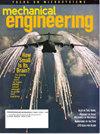有尾巴的机器人
IF 2.1
4区 工程技术
Q2 ENGINEERING, MECHANICAL
引用次数: 2
摘要
直到最近,大多数四条腿的机器人都缺少一个在自然界中屡见不鲜的特征——尾巴。实验室对动物运动和机器人的研究表明,去掉尾巴是设计上的一个缺陷。事实上,我们在弗吉尼亚理工大学的实验室进行的研究表明,一个铰接的机器人尾巴可以有效地操纵和稳定四足动物的静态和动态运动。本文章由计算机程序翻译,如有差异,请以英文原文为准。
Robots with Tails
Until recently, most four-legged robots have lacked a feature that is found again and again in nature—a tail. Studies of animal locomotion and robots in the laboratory indicate that leaving out tails has been a design drawback. In fact, research conducted by our lab at Virginia Tech has shown that an articulated robotic tail can effectively maneuver and stabilize a quadruped both for static and dynamic locomotion.
求助全文
通过发布文献求助,成功后即可免费获取论文全文。
去求助
来源期刊

Mechanical Engineering
工程技术-工程:机械
CiteScore
0.60
自引率
0.00%
发文量
21
审稿时长
6-12 weeks
期刊介绍:
Information not localized
 求助内容:
求助内容: 应助结果提醒方式:
应助结果提醒方式:


